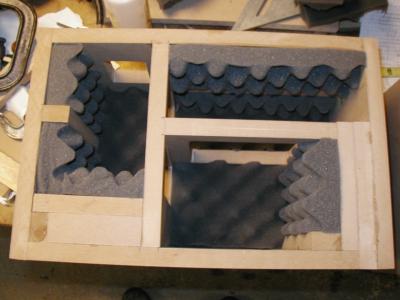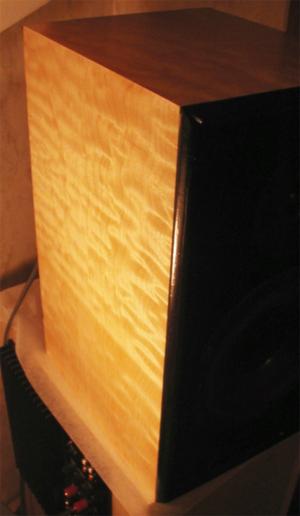

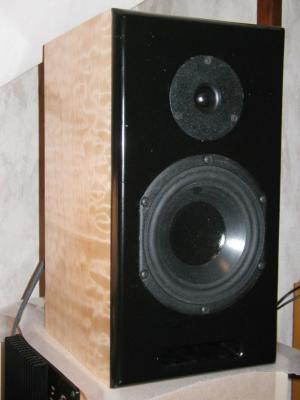
IntroductionThe Hyperion is a small two-way bookshelf speaker that employs the Hiquphon OW I fabric dome tweeter and the Peerless 6.5" HDS woofer. They are very similar to the Dillon Acoustics Metaphor speaker design which uses the same drivers. I went a bit overboard with the cabinets and they are very solid. The Hyperion was my first attempt at designing a speaker by myself with the help of Speaker Workshop and my measurement setup. In the end I concluded that the woofer filter for the Metaphor design was hard to beat and "borrowed" it for my design.DriversHiquphon OW IExcellent frequency linearity 2 - 20 kHz +/- 1 dB typical Excellent phase linearity Smooth roll-off at high frequencies Low and well controlled resonance frequency Well controlled damped low frequency response, soft raising Very broad-banded (2.0 kHz to 27 kHz) Fast transient response Very low distortion A-periodic damped moving system Exponential phase-correction horn-loaded Saturated magnet gap for low magnetic distortion Perfect sealed housing Heavy duty connectors for 2.5 mm2 lead wire Excellent, mechanical robust, non-vibrating, soldering contact Shock absorbing construction Matched pairs within 0.5 dB in frequency range 2-20 kHz (OW types only) Beautiful sound capabilities Peerless HDS 6.5" woofer (850439) A high End mid-woofer with rigid aerodynamic cast aluminium basket profile and ventilated spider. The cast basket provides the necessary sturdy base for the magnet structure and suspension and allows for long excursion of the cone. The spider is ventilated to achieve the lowest possible compression and to allow air to flow freely to create a cooling effect for the voice coil. The design of the basket front allows for very slim box designs and the edges are chamfered to re-duce the necessary amount of counter sinking. The three or five layer sandwich cone improves accuracy and consistency of sound reproduction over the entire frequency range, creating a more "musical" driver.

Crossover DesignThe Hyperion utilizes a basic parallel crossover network in a 4th order Linkwitz-Riley configuration. During the design phase I also came up with a series version which approximates the parallel network with similar slopes and crossover point. The sound is very similar between the two designs but there are a few minor differences. The parallel network seems to have a more focused center image while the series network provides a more spacious soundstage. With regards to tone the two designs are almost identical. In the end I chose the parallel network primarily because it uses fewer parts overall.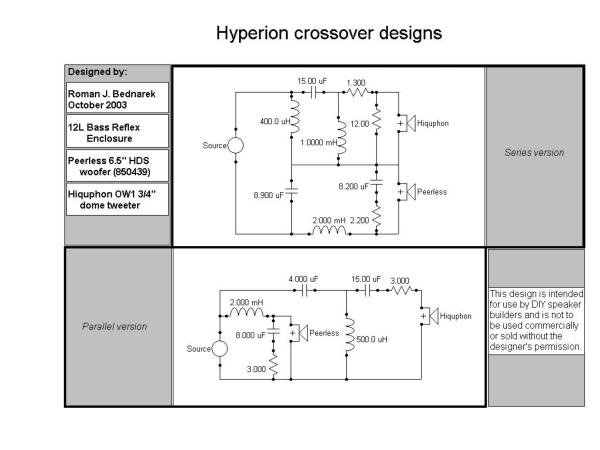
PerformanceBelow is a plot of the ungated farfield response for the Hyperions. This measurement includes the effects of room reflections which appear below 500 Hz and result in exaggerated peaks and dips in the response. Overall the response is pretty flat, within +/- 2dB across most of the frequency range. The dips and peaks in the 2-5kHz region are primarily due to cabinet diffraction effects and are less severe off-axis. Their efficiency is around 85dB at 1 meter which is average for a typical two-way design with extended bass response.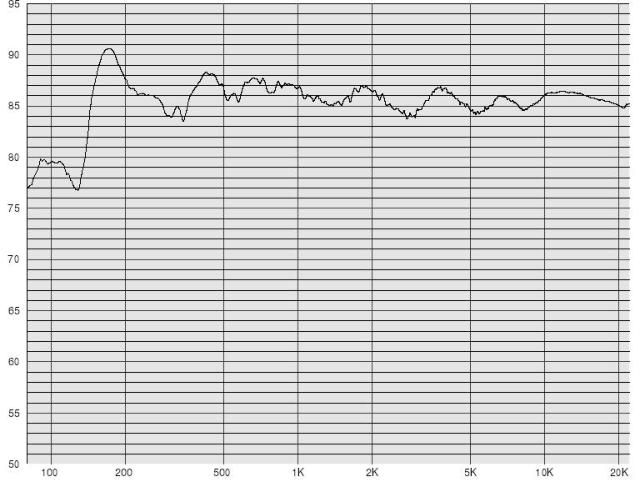
|
